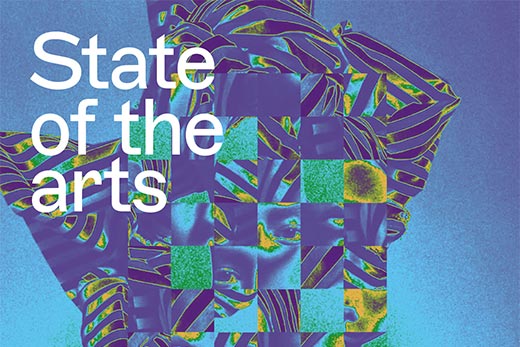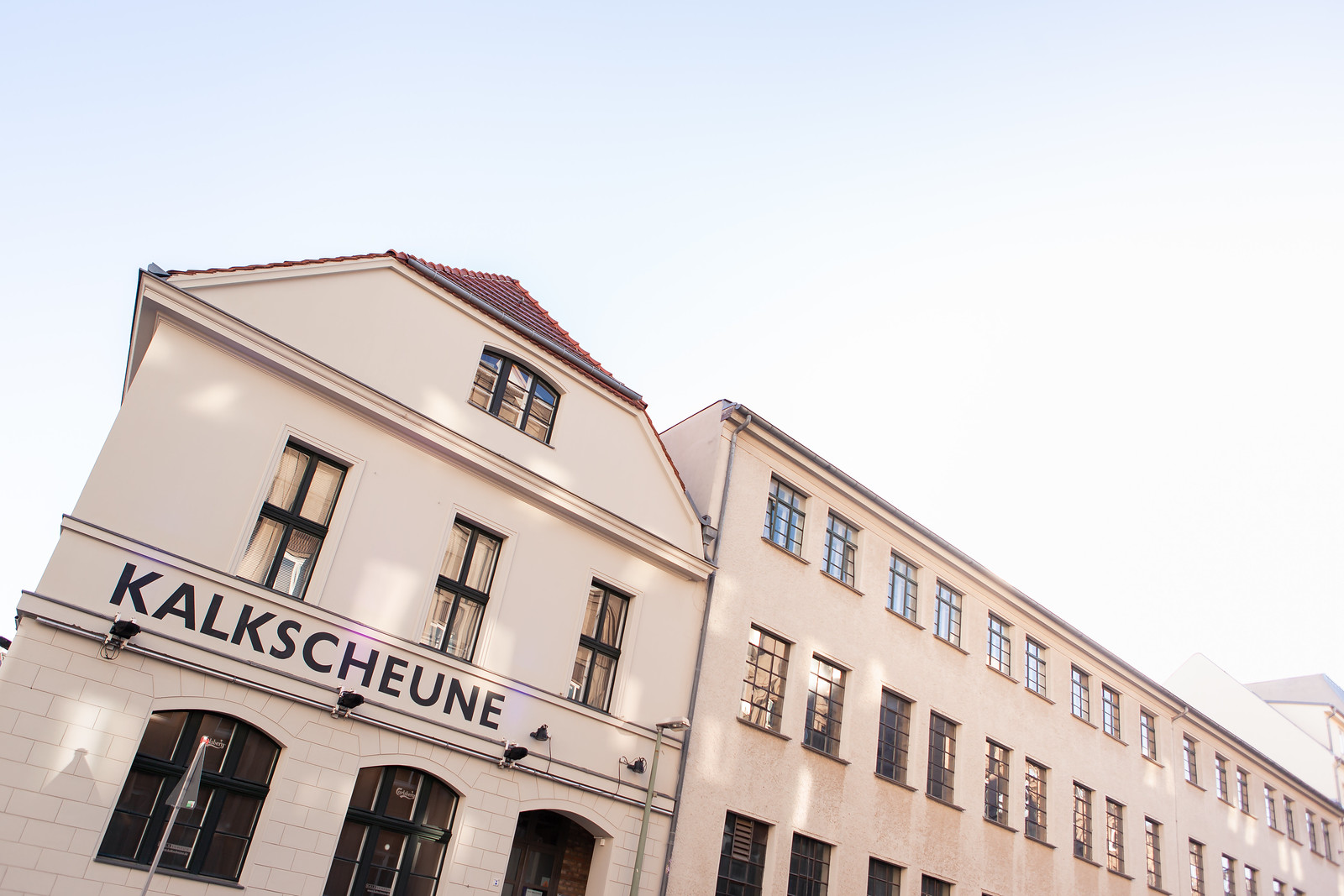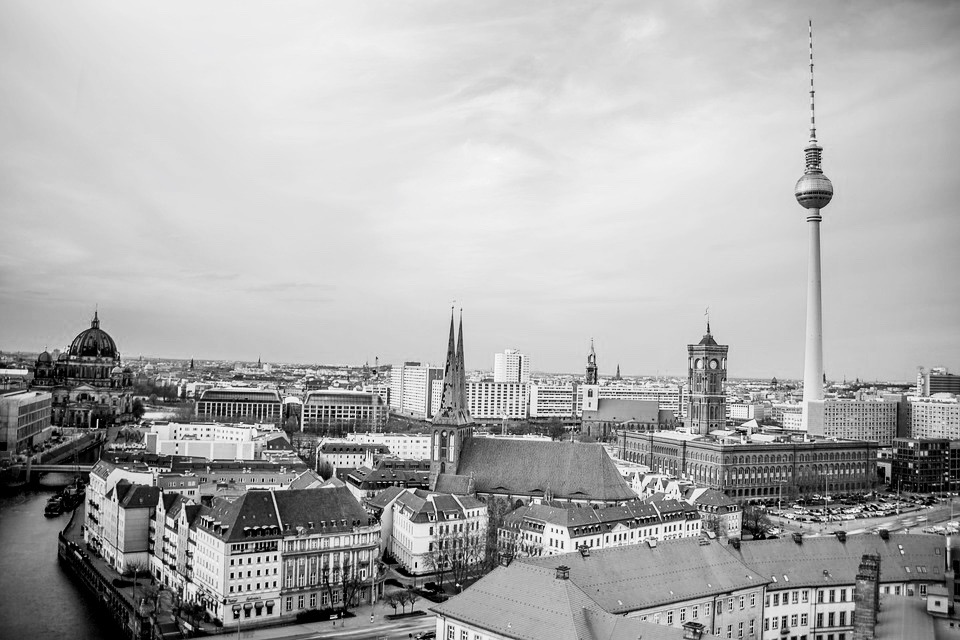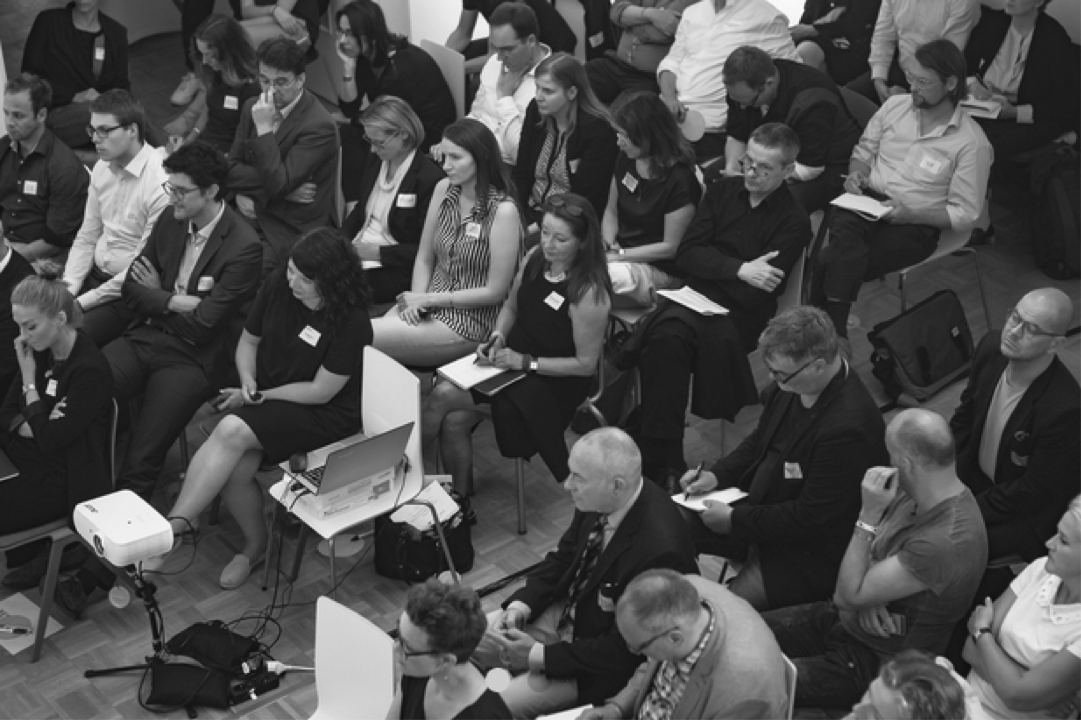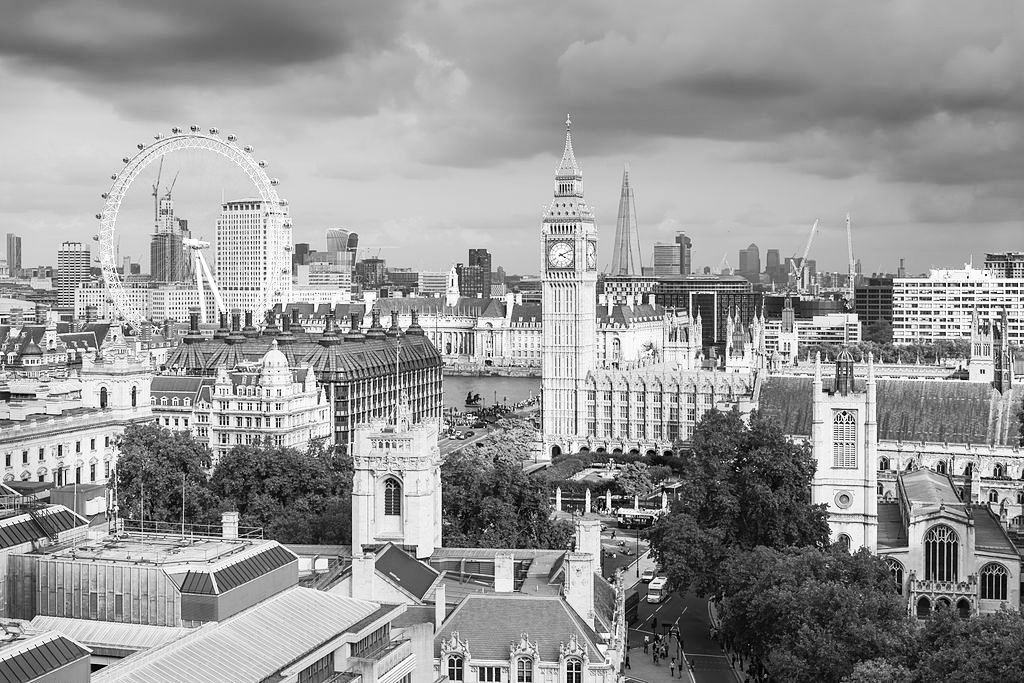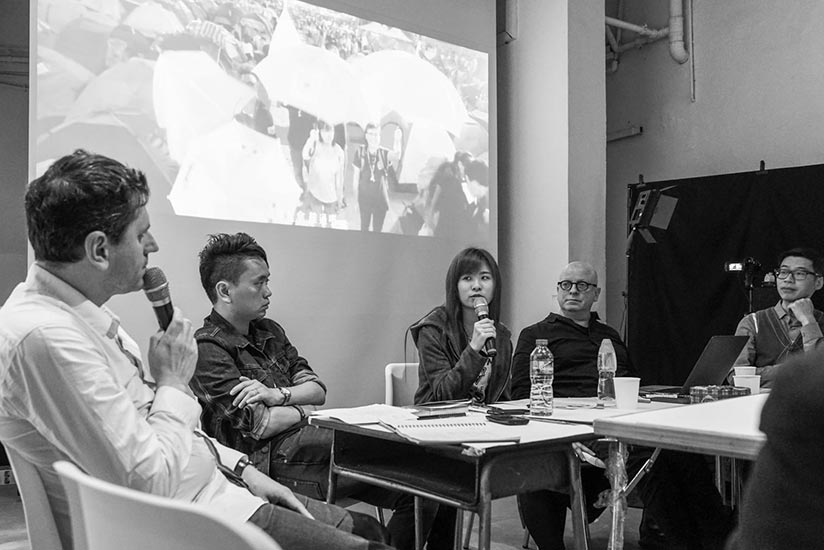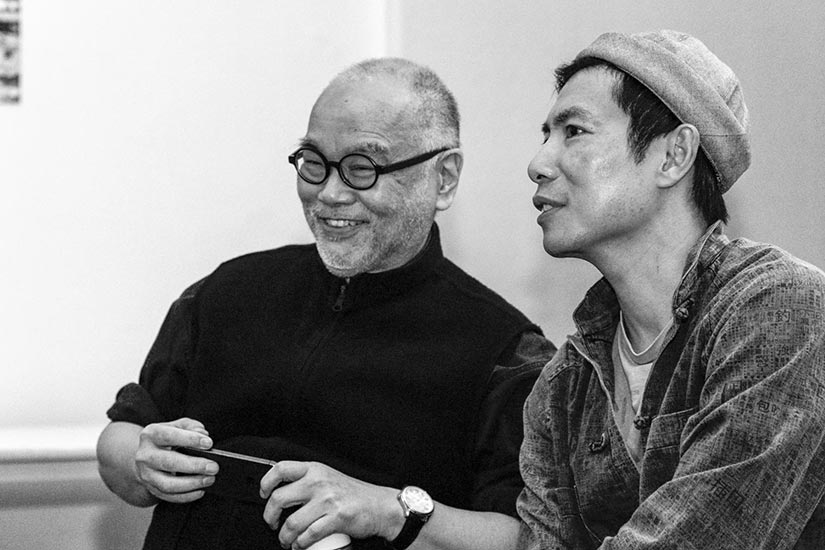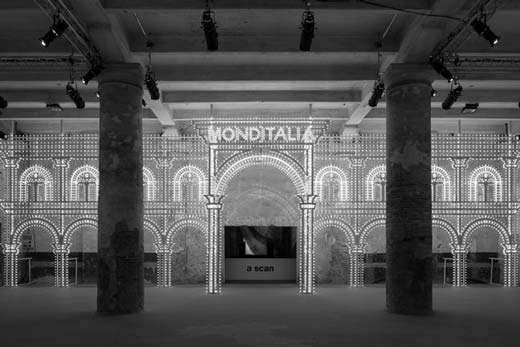Essentials
Which are the event format related key factors framing and promoting a discussion on the principles of global creative systems? Observations made at the Venice Panel.
The experimental nature of the Venice Panel, which was part of the “European and Global Cultures. Perspectives on Architecture & (Creative) Economy” event held in the Arsenale, made it possible to test new ideas concerning the creative economy with international experts on a temporary platform within the exhibition context of the Architecture Biennale, and thus to develop new perspectives. One significant factor contributing to productive exchange in the interdisciplinary discussion, and thus to the success of the summer 2014 meeting, was the preparation and planning of the panel. Another was the choice of actors, which was absolutely decisive for this success. This is illustrated by observations regarding the event format, which are presented below in three sections: the framing and setting of the event, interaction during the stay in Venice, and then the results of the exchange.
Framing and Setting of the Panel
A central condition for a promising global view in any discussion concerning principles of Global Creative Systems is the choice of international experts who will take the time to participate in an open exchange in which new approaches might be developed. The event was scheduled as part of the weekend programme at the 2014 Architecture Biennale in Venice and it took the form of an experimental workshop. These two aspects seemed to clearly appeal to the panellists. The event took place in an exhibition context where new architectural possibilities and models of expression were being sought, and which was at the same time itself a part and a medium of global and creative architectural systems. In addition, Venice - which once influenced the world market - offered a suitable historical backdrop for contemporary questions regarding the future of culture and the economy in a globalised world.
The event was declared to be an “experiment” that would take place during the Architecture Biennale. This required all actors - from fields of the arts and sciences, including culture, social science and economics - to enter into a format where they would not only speak about their existing positions in keynotes and lectures, but where they would also explicitly present and test their own international approaches in a small circle, with a view to promoting discussion on the principles of Global Creative Systems. At the panel event, an approach to analysing the creative economy using “curatorial strategies” would be presented for the first time.
To prepare for the panel, the actors filled in a questionnaire, and a basic text prepared by the event organisers on the subject of “CreativeEconomies: A Venture” was sent to them. The panel programme, with references to the focus of the public workshops contains short biographies of the participants. This documents the approaches of the event organisers and underlines the experimental character of the interdisciplinary encounter.
The fact that the public panel event took place in the middle of an exhibition at the “Arsenale” was a challenge. The Biennale public was strolling through the long, high-ceilinged rooms of the former ropeyard while part of one of the rooms contained chairs, a small stage and a lectern. The open-space arrangement of the event meant that visitors to the exhibition could take part in the public workshop - although few took advantage of this - while the event area was exposed to background exhibition noise which was annoying, if not downright disturbing.
The schedule for the public workshop, the fact that the panellists were all staying at the same hotel, the transport in a water taxi to and from the event, and the evening or free-time programme, with dinner, the Z-Club visit and the guided tour of the Fundamentals exhibition, provided an inner framework for the stay in Venice, designed to support the exchange and interaction of the panellists in an informal context as well – or even particularly.
Interaction
The intention behind the planning and organisation of the event was thus to use an experimental approach during the stay in Venice on several levels, and to use it as efficiently and purposefully as possible, so as to further develop discussion on the principles of Global Creative Systems. To this end, the concept of curatorial strategies, among others, was presented and tested to see whether it could contain an integrative approach for the creative economy in its investigation of how creative and innovative processes are organised in a global perspective.
The format of the workshop with its daily programme contributed substantially to the formal interaction of the panellists and was arranged to allow the participants to take on different roles in different parts of the programme, for example as speakers, listeners, critics and participants in a discussion. The shifting between the two types of input meant that the statements were designed to be rather static presentations with pictures and they described the role of various approaches and principles within Global Creative Systems, while the case studies are more dynamic presentations of specific cases of creative-economy sub-markets. The aim of this shifting from an input role to one involving commentary and criticism was to promote open discussion and a common development of perspectives.
In the morning, there was a short introduction, followed by three statements about the role of the art market, academic study and the production of knowledge, as well as strategy development and entrepreneurial initiatives within the Global Creative System. Could common ground for a global perspective be extrapolated? The three statements were followed by a short intervention by each of the remaining four panellists. Questions and comments on an approach to the concept of curatorial practices and the fundamental concepts of globalisation, creativity and curating then took place. Do comparable curatorial practices exist in the various fields of business, science and the art market? Is a repositioning possible through this form of practice? Out of this came a discussion on the perspectives of the curator, on criticism and principle, and thus the question of who plays what role in the production of cultural values, and with what intentions.
In the afternoon, four cases from the creative economy which represent different sub-markets were presented: Internet, fashion, architecture and urban planning. The expanded concept of curating was introduced as “smart curation” for the Internet and as the “curation of ideas” or “curatorial engagements” in the fashion market. The additional value of the concept “curator” is debatable and was again questioned by the other panellists. A sort of league of allies arose when one panellist explained that his research results had not yet been made public and should please not be distributed further. This statement makes it clear how knowledge, through the operating mode of the creative economy, can have an impact on planning processes in cities and thus tangible economic consequences. Here one of the central questions was extrapolated from the statements and defined precisely: What kind of values, culture and economy are under discussion here? For the analysis of the creative economy, the emphasis should not only be on creativity and culture; the question of alternative economies should also be borne in mind. So it is not only a question of “creative” but also of “economy”. This discussion and the resulting questions triggered an initial move towards a common approach.
The cases, more than the statements, invited an exchange and thus, as the day went on, the comments and questions of the panellists increased in number. Everyone was now participating in the discussions, and spontaneous interjections – both criticism and praise – followed. It was an active debate, and by the end of the afternoon, the panellists were again taking up committed positions. At the end of the day, the panellists sat down at a round table for the first time and discussed a second experiment and a suitable format for such an event.
From Curatorial Strategies to Governance of Cultural Values
At this final discussion and at a final meeting on the following day, discussion was on the subject of governance of cultural values and alternative economies within the creative economy. This preliminary approach, focussing on evaluation logic and mechanisms in the production of cultural values, met with more consensus than the curatorial strategies suggestion; moderation of the discussion was, in the opinion of all the participants, not necessary. Through the panel discussion about the curator’s approach and the criticism of this, a field and two concepts shared by those present opened up. This led to a new approach which involves questions regarding the future. These questions can be used to examine globally the processes and mechanics of the cultural economy in case studies in the fields of science, culture, economics and politics. We are not talking here about how art, business and science look at the field of Global Creative Systems differently in a global world, but rather about analysing what connects these fields at a local level.
The Poetry of the Format
Finally and by way of a conclusion, here are two observations on the Venice Panel which make clear how important the planning of the event format, as regards the framing and interaction, is for the development of new approaches for the discussion.
- One comment from a visitor to the Biennale was a sharp reminder that the discussion was public. Alongside the focussing on content as a result of the Venice Panel, it was clear that adjustments to the format were necessary. It should be possible to work in a more focussed manner and to discuss and prepare for such a meeting accordingly. Here, the format, preparation, round of discussion, spatial setting, seating arrangement, moderation, composition, documentation, time and place must be reconsidered. As far as composition is concerned, more attention must be paid to diversity, particularly the gender and age of participants, and inclusion of the public and of students should be actively encouraged. It also makes very good sense to link up with a major Global Creative Systems event, such as the Architecture Biennale in Venice, or Art Basel Hong Kong.
- After the panel in the Arsenale, all of the panel participants were sitting in the same water taxi on their way back to the hotel. After an intense and exciting day and the successful staging of a demanding debate involving interdisciplinary perspectives – all of which had been discussed in an atmosphere of mutual respect - a certain feeling of relief and relaxation was apparent. The fact that the participants were all squashed together on the rocking boat brought the group even closer together, so that a relaxed atmosphere came about and people were joking. This is no doubt the reason why one of the panellists shouted: “Before midnight, the curator will be dead and buried!” And in fact, on the following day, alternatives to the curator were found, by the preliminary consensus of the Venice Panel: the governance of cultural values and the alternative economies! The informal communication on the fringe of the panel, the fact that the panellists were staying in the same hotel, the dinner, the visit to the Z Club and the tour of the Fundamentals exhibition provided the right setting for people to get to know one another, to exchange ideas and to have contact with one another outside the formal interaction on the panel. Precisely these moments are essential to the success and the exchange – but they can only be planned up to a point.
- And finally, particularly the discussion of the concept of curatorial strategies showed how important it is for the terms “governance”, “cultural values”, “alternative economies” and “valuation devices” also to be more clearly defined before the next debate on the creative economy.
Janine Schiller, Cultural Studies scholar and Architecture historian, Lecturer at the Department of Cultural Analysis at Zurich University of the Arts (ZHdK). She teaches Cultural Journalism in the MA in Art Education programme and is involved in research on subjects such as urban development and architecture exhibitions.
This contribution is based on the observation protocol, Venice, 25–27 July 2014.
